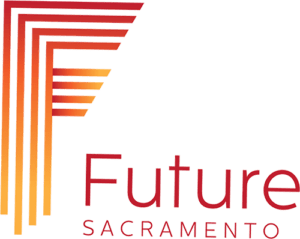Covid-19 school closures are not experienced equally by students.
“The coronavirus pandemic has done nothing to level the playing field of American education, and instead has widened the gaps that have always existed.” (NYTimes)
With every school closed, there are several universal themes that all students share. For example, social isolation from in-person connections with peers, overcoming tech troubleshooting, complicated transitions to new processes, and jumbled schedules. Every student has had to tackle and overcome obstacles they would not have had to deal with at school.
Stay-at-home orders and school closures have exposed disparity, creating a stark contrast between haves and the have-nots. It was clear, even when schools were assessing if school closures were necessary, that students will fall back to inequities that they leave behind when they attend and achieve in the classroom. The pervasive unbalance created by school closures exists because the way a student experiences distance learning depends on their home situation.
Some students are thriving in distance learning. Their home has the necessary resources and educated parents who can offer knowledgeable support. Benefits for thriving students may include their freedom to work at their own pace, autonomy to make their own schedule, and opportunities to collaborate with classmates. Tech literacy is improving for students who are accessing video conference calls and online course work. There are even examples that show the break from the physical classroom may be bringing to light hidden reasons some kids struggled in class.
However, many students are struggling. Not every student has parent present who has the time or ability to help like a teacher would. For the parents who are essential workers, they are not home to help with distance learning. Many students do not have the resources they need at home, nor the accessibility or funds to acquire educational materials and equipment. Students from lower-income neighborhoods, school districts, and cities have more economic barriers. Once the schools closed, some school districts had to spend several weeks training staff members to use remote teaching tools, distributing laptops to students and getting meals to low-income families – before distance learning could even start. Worst case, difficulties abound for students who go without food at home or needed to seek security inside school buildings.
Distance learning has “magnified existing problems in familial dynamics” (Nora Fleming, edutopia) and “exacerbated their individual circumstances” (Martin Urbach, teenvogue)
Mitigation of such gaps is “sometimes direct — think about free breakfast and lunches,” he said. “Sometimes it’s indirect — think about the schools that can provide a healthy and safe and welcoming environment that helps kids … to set aside some of their weightier concerns they face outside of school. When we remove those schools from children’s lives for two to three months, there’s nothing mitigating the larger social inequalities. “We can expect those gaps to increase during this time period because the lives that children are living outside of school are very unequal.” What’s more, the pandemic is amplifying the effects of preexisting inequalities, Welner said. (Gazette – Colorado)
The pandemic outbreak is also reigniting the conversation around the Digital Divide, the gap between those who have easy access to computers and the internet, and those who don’t. The unplanned and swift need for schools to move to distance learning for the remainder of the 2019-2020 school year forced all involved in education to examine who did not have access plus how to quickly provide equipment and create expansion of broadband service to under served areas.
When we all return to some yet to be defined “new normal” will education look different?
Come fall, there will be far more emphasis on catch-up and remediation than is typical at the start of the school year. The incidence of summer learning loss, well documented for a century primarily in low-income and urban settings, will now extend more broadly into districts and community where access to tech devices and the internet is restricted. Once the pandemic is under control and schools acclimate themselves to “the new normal,” whatever that is, educators will assess this spring’s experiences and chart a path toward a different future. One thing that’s certain, educators say, is that the experience will put a spotlight on statewide systemic disparities. “My big fear is that this will further widen the achievement gap between the haves and the have-nots,” says Tami Lunsford, a high school science teacher at Newark Charter School. (www.delawarepublic.org)
Will this pandemic-forced instructional changes:
- spark broader reforms?
- provide takeaway lessons that can help us build more equitable educational access?
- motivate students (and families) to discover self-driven ways that they can improve their own studying?
- open new channels for students to educational support?
- create strong connections between teachers and students?


